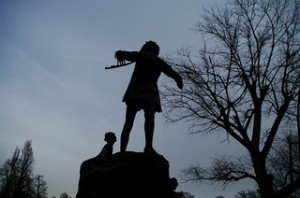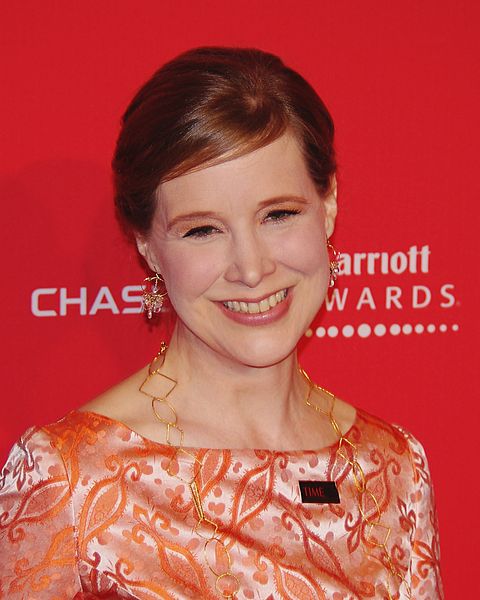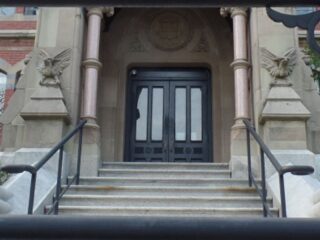“On these magic shores children at play are for ever beaching their coracles. We too have been there; we can still hear the sound of the surf, though we shall land no more.” – JM Barrie
One of the joys of walking across London is that sense I have of drifting from one world to another through an endless parade of contrasting wonders. One moment I am in a district of bustling activity bursting with colour, crowds and vitality, the next I am led into a scene of restful solitude where it is difficult to believe I’m in the centre of such a boisterous metropolis. In a city renowned for its chaotic noise and rush, it is surprising how many quiet retreats of tranquillity can be found within the heart of London. I am intrigued by the fact that London has more green space than any other major conurbation in the world.
I have always been fascinated by the Royal Parks of London where people can escape from the intensity of the busy streets and lose themselves in another reality, places where the mind has room to breathe and wander freely. The large English gardens situated in the capital, such as Regents Park and Hyde Park, have such strong personalities that they resonate in my mind as symbols of England just as much as Big Ben and Trafalgar Square. Of course there are parks all over the country, in all our towns and cities, but I sense something indefinably special about those situated in London.
Perhaps their significance seems greater because they’re on such a grand scale and forever wedded to the history and traditions of the great city. Not to mention they’re probably held in particular affection by Londoners themselves, because they offer the only taste of the countryside available to them in the huge urban sprawl of the city. But I feel it’s more than this, these parks seem imbued with an innocent charm, a kind of magic, like becoming adrift in some enchanted wood.
One of my favourite parks is Kensington Gardens; a delightful green arena, lying immediately to the west of the extensive acres of Hyde Park, it has a wistful air about it and a magical haze seems to hang over its gentle green fabric. The atmosphere has a lightness which gladdens the heart, a soothing place, full of wooded idylls and graceful gardens, just yards away from the hectic congestion of the capital. It remains one of the private gardens of Kensington Palace but is open to the public and provides a welcome relief from the relentless urban pace of the city. It is a precious link to the natural world, a paradise of trees, grass and flowers amidst the madness of city life.
Walking here I feel I have entered Arcadia, that lost world evoked in the paintings of Watteau and Fragonard. The park is invested with long elegant avenues decorated with magnificent trees where romantic water gardens are festooned with petite statues surrounding delightful fountains. It is a charming realm of cultivated nature, a placid oasis where the dreamer can lose himself in the realm of the imagination.
One such dreamer who knew this place intimately was the Scottish writer JM Barrie. It was Kensington Gardens which provided him with the inspiration to create one of the most enduring characters in English literature: Peter Pan. Although Barrie died seventy five years ago in 1937, the appeal of Peter Pan seems as ageless as the boy himself. The story of the boy who can fly, and his adventures in Neverland with Wendy Darling and her brothers, Tinker Bell and the Lost Boys, is a celebration of childhood where Barrie vividly portrays just how much we have lost by growing up.
Barrie lived for seven years just opposite Kensington Gardens on the Bayswater Road with his wife Mary, and it was here he wrote the story of Peter Pan. Barrie would often walk his St Bernard dog in Kensington Gardens, and it the place he met and developed a binding relationship with the Llewelyn Davies family, a friendship which would prove crucial to the invention of the Peter Pan character. In the park, Barrie would entertain the Llewelyn Davis boys (George, Jack and little Peter) with thrilling adventure stories which held their imaginations spellbound. These playful moments proved inspirational to Barrie who began to create a tale about a baby who flew away from home.
The Peter Pan character first appears in The Little White Bird, which is largely a book for adults but contains episodes about a boy who has magical adventures in Kensington Gardens. It is said to be a fictionalised version of Barrie’s friendship with the Llewelyn Davies children. The park then became the setting for his book Peter Pan in Kensington Gardens, a kind of prelude to the character’s more famous adventures in Neverland.
For a child, a place like Kensington Gardens presents a fresh new land of mystery and adventure; it is the call of the wild. Barrie was somehow able to tap into this childlike vision of the park; he had the ability to see Kensington Gardens as the Lleweleyn boys saw it: an exciting, unexplored world, full of magical possibilities. Through the games of fantasy he devised for the boys to play during those carefree days of fun in the sunlit splendour of the park, Barrie transformed Kensington Gardens into Neverland, the realm of the imagination where all our dreams are realised.
In Peter Pan, Barrie has perfectly captured the joyful spirit of the child’s mind-set and his natural willingness to believe in magic. The child’s ability to believe in the unseen is very powerful, it can conjure whole worlds which can be seem more real than the solid certainty adults attempt to impose upon him. In Peter Pan, this ability is best symbolised by the belief in such unearthly creatures as fairies. For Barrie, fairies are synonymous with the innocent joy of childhood, and in Peter Pan he introduces the idea that fairies are quite literally expressions of childhood joy:
When the first baby laughed for the first time, its laugh broke into a thousand pieces, and they all went skipping about, and that was the beginning of fairies.
The fairy element of Peter Pan also has its origins in Kensington Gardens, a place long associated with fairies and other magical creatures that were said to live in the park. The fairy kingdom is a significant feature of Peter Pan in Kensington Gardens where the fairies befriend Peter, and the boy eventually plays the panpipes at the fairy dance celebrations. Much of the book’s incidents occur after “Lock-Out Time”, when the park is closed to the public and the fairies emerge from their hideaways.
Walking through Kensington Gardens, it is easy to believe that there is a scattering of fairy dust in the air. It is an enchanted realm where my imagination floats away into dreamy idylls. I can get lost in other worldly regions of consciousness while wandering about. Off the beaten track I can disappear into a mini wilderness of nature, a haven of quiet bliss where whispers of the fairy magic that Barrie evokes in Peter Pan can still touch the solitary soul.
One of the most endearing objects to stumble upon in Kensington Gardens is the bronze statue of Peter Pan commemorating Barrie and his creation. It is modestly situated without fanfare along a quiet pathway shrouded with trees, and depicts Peter with an array of little woodland creatures at his feet. Within this charming grove I can easily fall into reverie and contemplate the haunting, ethereal atmosphere which pervades this quiet spot, where the veil between this earthly reality and that enchanted other- world created by Barrie is almost lifted.
Frustratingly, this magical feeling is fleeting and soon evaporates once I return to the rigid predictability of normal life. It is a world Peter Pan was determined to never join. Peter instinctively knew that the “grown up” world Man has created is a joyless desert of duty and enslavement, a dull unimaginative place where one is forced to work, strive and be responsible. He understands that this is not what we were created for. This is why Peter hates adults and is determined to remain in his innocent state of grace in Neverland, where he can play in blissful freedom forever. It is his Garden of Eden.
We all secretly pine for this innocent world where there is no need to work, where there is no pressure to succeed, where no effort or struggle is required, just the freedom to experience the pure joy of being alive. We seem to be forever trying to recreate this natural paradise, even when surrounded by the urban brick and concrete of our cities. The frenetic rush of London is tempered by a wealth of green spaces like Kensington Gardens, while its cramped householders are determined to preserve their portion of paradise in the form of the back garden, that essential accoutrement of Englishness. The desire to get back to the Garden is embedded deep within our psyche.
Perhaps this explains why I am so strangely drawn to Kensington Gardens and why it affects me in the way it does. I am beginning to realise that my love of Kensington Gardens and the other Royal Parks of London is somehow connected to this subconscious desire to return to the natural paradise we once inhabited. It is the unarticulated search for that lost innocence of childhood, so beautifully portrayed by Barrie in Peter Pan. And it cannot be denied that sometimes, while walking through Kensington Gardens, I do momentarily transcend time and I am reacquainted once more with nature’s child, that happy little boy I once was. Such moments are filled with exquisite joy.
It is then that I understand that Neverland is not so much a physical place as a state of mind. It is a metaphor for the imagination. In Peter Pan, Barrie intimates as much: he carefully explains that the Neverlands are located within the child’s mind, and although every Neverland is always more or less an island, each one will be uniquely individual. The implications of this for my own life are becoming clearer. Sadly, I cannot live as a child forever as Peter Pan did, but I can still re-experience the wonder and magic of childhood, all I need to do is employ my imagination. We may not be able to physically return to the Garden of Eden, but through faith and imagination we can live there yet: the kingdom lies within.
Maybe in the end imagination is all we have. The wonder of childhood lays in the access to an uncorrupted imagination which runs freely through all the child’s interactions with the world. It is a natural gift which adults have largely forgotten. Barrie turned the innocent joy of childhood into a kind of manifesto for the power of the imagination and belief. He understood the extraordinary potency of the imagination and that only those who believed in magic would ever experience it. One of the most memorable moments in the stage play of Peter Pan is the scene where Tinker Bell is in danger of dying from the poisoned medicine. She informs Peter that she could be saved if only children believed in fairies. Peter then turns to the audience and asks those who believe in fairies to clap their hands. This usually results in an explosive burst of clapping from the audience which saves Tinker Bell’s life.
It would be easy to dismiss this as just a piece of charming whimsy, but Barrie is saying something of profound importance: that if we believe miracles can occur, then it is all the more likely that we will experience them in reality. I realise now that if I wish to make possible in my life that which seems impossible and fulfil the desires of my heart, then I need to listen to Peter Pan and believe with the innocent, unquestioning faith of a child, these simple words:
So come with me, where dreams are born, and time is never planned. Just think of happy things and your heart will fly on wings, forever, in Never Never Land!
*
Paul Millward is the author of Finding God in the Celestial City, a record of his extraordinary spiritual journey in Venice, Italy, available in the Amazon Kindle Store.
For more from Millward, check out our accompanying interview with the author and take a look “behind the article.”












